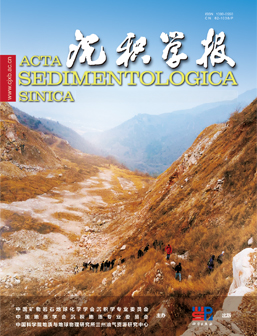Sedimentary environment and surface process since the last deglaciation in Maqu reach of Yellow River in the Zoige Basin
doi: 10.14027/j.issn.1000-0550.2023.110
- Received Date: 2023-06-28
- Available Online: 2023-11-27
-
Key words:
- Zoige Basin /
- Maqu reach of the Yellow River /
- last deglaciation /
- surface process /
- environment change
Abstract: Abstract: Through detailed field investigation in the Zoige Basin, complete stratigraphic profile of sedimentary sequence was found and systematically sampled on the high platform north of the hydrological station at the northern end of the old bridge of the Yellow River in Maqu County at the front of the glacial fans and alluvial fans. Through grain size analysis and Optically Stimulated Luminescence (OSL) dating, the sedimentary environment and surface process changes since the last deglaciation in Zoige Basin were studied. The results showed that during the last glacial before 14.5ka, the ice meltwater and mountain flood process in the Warihe River in the eastern end of the Jishi Mountain were active and accumulation rapidly in the foothill, forming a thick glacial- alluvial fan sand and gravel layer. During the B?lling-Aller?d warm period of 14.7-11.7 ka, the glaciers melted, and the depression in the front of the glacial fans and alluvial fans layer formed a muddy swamp environment with the accumulation of gray-green sandy sediments. However, the climate changed abruptly and worsened during the Younger Dryas period, the upper part of the gray-green bog soil layer was folded and deformed due to surface freeze-thaw action.In the early Holocene (11.7-8.5ka), the prevaling aeolian activities made the shallow depression in this area accumulate to form the interlayer of aeolian sand and mud soil. During the warm and humid period of 8.5-3.1 ka, the palaeosol of swamp meadow black soil was formed in this area. In the late Holocene since 3.1 ka BP, the climate was relatively dry, and the sandstorm deposits were transformed into subalpine meadow paleosols. The results are of great significance to reveal the response of surface processes to environmental changes since the last deglaciation in the Zoige Basin, and to further understand the environmental changes and surface processes in the Tibetan Plateau for global changes.
| Citation: | Sedimentary environment and surface process since the last deglaciation in Maqu reach of Yellow River in the Zoige Basin[J]. Acta Sedimentologica Sinica. doi: 10.14027/j.issn.1000-0550.2023.110 |






 DownLoad:
DownLoad: